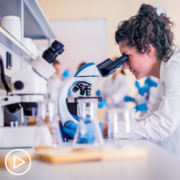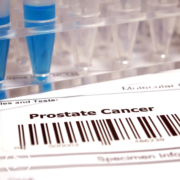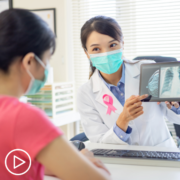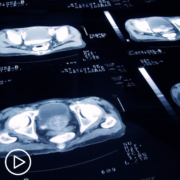Should All MPN Patients Undergo Molecular Testing?
Should All MPN Patients Undergo Molecular Testing? from Patient Empowerment Network on Vimeo.
Dr. Gabriela Hobbs discusses the necessity of molecular testing for myeloproliferative neoplasm (MPN) patients, including the pros and cons of this in-depth testing for patients with polycythemia vera (PV) and essential thrombocythemia (ET).
Dr. Gabriela Hobbs is a hematology-oncology physician specializing in the care of patients with myeloproliferative neoplasms (MPN), chronic myeloid leukemia, and leukemia. Dr. Hobbs serves as clinical director of the adult leukemia service at Massachusetts General Hospital. Learn more about Dr. Hobbs.
See More From MPN Clinical Trials 201
Related Programs:

|

|

|
Transcript:
Katherine:
How useful is having a genetic panel done? Should all patients get molecular or genetic testing?
Dr. Hobbs:
Great question. And I think that it is very important to have genetic testing.
And genetic testing involves more than just testing the JAK2 mutation. So, we know that the JAK2 mutation is the most common mutation in patients with MPN. But that being said, there are other mutations that also occur such as the calreticulin mutation and the MPL mutation.
And so, I think having genetic testing that at least tests for those three mutations is very important so that we can actually help a patient know that they have an MPN. In addition to those three main mutations, many clinicians now have access to what’s called extended next-generation sequencing, where there’s a panel that tests for many different genes at the same time and can test for a variety of other mutations.
And this is particularly relevant for patients with myelofibrosis. As we know that having other mutations, like, for example, mutations in IDH or ASXL1 and others, can increase the risk of that disease in terms of its risk of transforming to leukemia or how long a patient may live with their myelofibrosis.
And so, I do recommend having extended next-generation sequencing done at least at diagnosis.
When I generally think about repeating that, if there’s something that looks like it’s changing within the patient’s disease, to be honest, also on the flipside of that argument, sometimes this next-generation sequencing will mostly contribute to adding anxiety and will not necessarily directly impact how a patient is treated. And this is particularly true in patients with PV and ET, where we’ll sometimes order these tests, and we get a bunch of mutations back, but we don’t know what to do with that information yet.
And so, as a researcher – not a clinician – as a researcher, I think it’s very important to have that information so that we can then do studies and understand the patterns of mutations and how that affects outcome. But as a clinician, and you as a patient, you need to really be aware of how that’s going to impact the patient in front of you and how that may impact you as a patient. Do you want to know if you have these mutations if nothing can be done about it? So, I would say, take a moment to reflect upon what I said and also to ask your clinician, how is this information going to help me? Do I need to have this information?
Maybe you want to have it done so that it’s in your record. But maybe you don’t necessarily want to know those results. And everybody’s very different. And I think it’s absolutely wonderful to talk to my patients about all the information. But there may be some patients that really are just, like, do the test but don’t tell me the results, because I know that I’m just going to be very anxious knowing that I have something that I can’t do anything about. So, just take a minute to talk about it with your doctors. I think that’s really important.





















